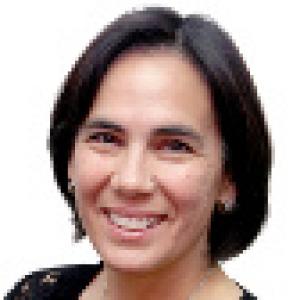Back to the Future? New Tools to Integrate Gender Equality into Market Systems Thinking
Having worked both as an advocate for gender equality and as a development practitioner for over 20 years, I know how hard it can be to translate concepts such as gender analysis and empowerment into practical tools that people can use in their work. Although many would now agree with Robert Zoellick that “gender equality is smart economics,” many of us are aware that showing this to be true is easier said than done.
The current thinking coming out of the Leveraging Economic Opportunities (LEO) project on Inclusive Market Systems Development underscores the need for a holistic systems view of markets that examines how women, men, and other stakeholders act and interact within the multiple complex systems that affect markets in different country contexts. But is this new?
Some will remember when the Women in Development (WID) movement challenged development planners and policy makers to recognize the shortcomings of “gender-blind” projects and programs. WID (and the debates surrounding it) were grounded in the need to look at why, how, and with whom we were working as well as how the different groups interacted—within gender, race, class, and socio-cultural boundaries—to understand who was being excluded and how the benefits of development could be more participatory and equitable. LEO has put this call forward again in a new paper entitled “Women’s Economic Empowerment: Pushing the Frontiers of Inclusive Market Development.” The paper argues that, to ensure scale, impact, and sustainability of our poverty reduction efforts, we must begin by identifying the country and context-specific entry points that can provide women, men and other marginalized groups with improved access to productive resources and the agency to control their interactions in complex social, cultural and market systems.
If the challenge over the years has been to “walk the talk,” how can those of us who have been working in this space help LEO to translate their women’s economic empowerment call into action? Through the LEO project, my organization, Mennonite Economic Development Associates (MEDA), was invited to produce a short training course for USAID Mission staff and partners on integrating gender equality and women’s economic empowerment into value chain and market systems development. The request was for us to elaborate, in a practical way, on the tools and strategies that we use when planning and designing our women’s economic empowerment projects.
The training modules that we developed are designed to work either together or separately. They draw on video and discussion to engage participants in a review of basic gender and market systems development concepts. They include hands-on exercises that illustrate how to combine gender, value chain, and market analysis in the design phase as well as how to identify entry points to increase or transform women’s roles in a given value chain or sector. They also talk about the importance of engaging men in the transformation of gender roles and relations, and they test participants’ ability to serve as facilitators to ensure that the results are sustainable, scalable, and replicable beyond the life of the project. In our experience, providing the space for women to take on leadership roles in their work has helped them to become agents of change in their own communities.
My hope is that these training tools will contribute to the learning agenda being generated by the SEEP Network’s Women’s Economic Empowerment Working Group. We encourage you to use, adapt, and share the course, and there are detailed facilitator notes to help you do this. We hope that these training modules help to simplify this important work and that we can move forward to a future that is more open, collaborative, and inclusive of women’s accomplishments and contributions.


